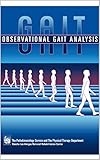A normal walking gait pattern will depend on certain critical biomechanical functions which are referred to as the determinants of gait. The 6 determinants of gait had been initially published by Saunders back in 1953, and have been widely embraced with many variations and also small problems. These determinants of gait are viewed as important as they help maintain a more efficient gait from the reducing the vertical center of mass movements which leads to a decrease in the metabolic energy essential for motion. The concept underpinning this is that the greater management of these kinds of determinants of gait brings about an increase in power preservation and much more effective movement. This theory which does underpin these types of determinants of gait happen to be in contradiction with the ‘inverted pendulum’ concept which considers the static stance leg being like a pendulum which follows an arc. The biomechanics community will continue to debate the benefit of these two models.
The 6 determinants of gait and how they have an effect on the centre of mass (abbreviated as COM) motion and energy efficiency are:
- Pelvic rotation: The pelvis pivots side to side in the course of normal walking to help in the progression of the opposite side through lowered hip joint flexion and extension. This has an effect on the lowering of metabolic energy and the improved energy efficiency by lessening the vertical COM movement.
- Pelvic tilt: In the course of typical gait there is a dipping of the swing period side of the pelvis that is governed by the hip abductor muscles. This muscle motion reduces the raising of the center of mass through the transition from hip flexion to extension. This can reduce the use of metabolic energy while increasing energy conservation by reducing vertical COM movement.
- Knee joint flexion during stance phase: The knee is extended at heel strike after which begins to flex when the foot is in contact with the ground. This knee joint flexion will decrease the height with the vertical trajectory with the COM contributing to some energy preservation.
- Motion at the foot and ankle: The ankle rockers at heel strike and mid-stance results in a reduction in center of mass displacement via the shortening of the leg play a role by lessening the center of mass vertical movement.
- Knee motion: The motion of the knee is related to those of the ankle and foot movements and leads to the decrease in the center of mass up and down displacement and leads to reductions in the center of mass movement as well as energy cost.
- Lateral displacement with the body: the lateral movement with the pelvis or a relative adduction with the hip is mediated with the effect of the tibiofemoral angle as well as relative adduction of the hip joint to minimize up and down center of mass displacement. It’s deemed that this characteristic has a major role in ensuring the efficacy in normal gait.
All six of these determinants of gait are generally practically intriguing as they help us give attention to a number of important aspects to keep the COM motion smooth to increase the effectiveness of walking. However, some recent analysis queries if all or most of the determinants really are that critical in the general pattern of the events which happen throughout the walking cycle. Despite that looking at these determinants is key in comprehending gait impairment.
Determinants of gait discredited?
Advertisement:
- Used Book in Good Condition
- Los Amigos Research & Education Center (Author)
- English (Publication Language)
- 72 Pages - 06/01/2001 (Publication Date) - Los Amigos Research & (Publisher)
- New
- Mint Condition
- Dispatch same day for order received before 12 noon
- Guaranteed packaging
- No quibbles returns
- Adams PT MS DPT, Janet M (Author)
- English (Publication Language)
- 248 Pages - 02/15/2018 (Publication Date) - Slack Incorporated (Publisher)
- Michaud, Tom (Author)
- English (Publication Language)
- 224 Pages - 06/15/2021 (Publication Date) - North Atlantic Books (Publisher)
- Amazon Kindle Edition
- English (Publication Language)
- 503 Pages - 07/13/2012 (Publication Date) - Churchill Livingstone (Publisher)
- Amazon Kindle Edition
- Inc., Rancho Research Institute (Author)
- English (Publication Language)
- 01/19/2021 (Publication Date)
- English (Publication Language)
- 222 Pages - 01/17/2023 (Publication Date) - Elsevier (Publisher)
- Hardcover Book
- AA (Author)
- English (Publication Language)
- 01/01/1994 (Publication Date) - SLACK, Incorporated (Publisher)
We get commissions for purchases made through links on this website. As an Amazon Associate I earn from qualifying purchases.
https://articles.abilogic.com/496617/what-determinants-gait.html







